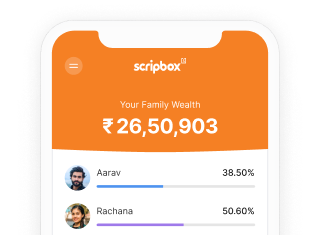Over the last few years, there has been a noticeable shift towards Portfolio Management Services (PMS). High net worth individuals (HNIs) in India are no longer settling for just mutual funds or dabbling in direct stocks. They are exploring more personalised investment routes. That’s where PMS come into the picture.
As of February 2025, the PMS industry in India is managing more than ₹30 lakh crore across over 1.9 lakh clients. A clear signal that this space is heating up.
But before opting for PMS, it is important to understand the charges and fee structure involved.
What are PMS charges and Fee structure?
PMS charges are the fees portfolio managers charge to manage your investment portfolio. Fees vary based on services and investor-portfolio management agreements.The principal PMS fee structure consists of:
- Fixed-Only Fee: A charge that is fixed annually and is not affected by performance. This fee typically ranges from 0.25% to 2.5% of the average portfolio value. Costs are predictable under this framework.
Let us say, your portfolio is worth ₹50 lakhs and the fixed fee is 1%. So, you will pay ₹50,000 annually regardless of how the portfolio performs.
- Performance-Based Fee: A percentage of profits above a threshold are charged for portfolio performance. If your portfolio earns 12% and the set level is 8%, the manager will charge on the extra 4% earned.
Now, continuing the same example. On a ₹50 lakh portfolio, if you earn 12% (₹6 lakhs), and the hurdle rate is 8% (₹4 lakhs), the fee is charged on the excess ₹2 lakhs. At 20%, you pay ₹40,000.
- Hybrid Fee Structure: This is a combination of performance-based and fixed fees. A performance charge is added to a reduced fixed fee when returns exceed the hurdle rate.
Here, you might pay a fixed 1% (₹50,000) plus 20% of returns above 8%. If your return is 12%, you pay 20% of the ₹2 lakhs excess (₹40,000), totaling ₹90,000 in fees.
Key components of PMS fees
PMS fees encompass many charges that affect returns. Understanding these factors helps investors make smart choices and cut costs. The portfolio management services fee structure generally includes.
1. Management Fees
These are the annual fees for professional portfolio management, which include administrative expenses, strategy formulation, and research. These fees may fluctuate contingent upon the services provided and the provider.
2. Performance fees
Performance fees, which are charged when a portfolio’s returns exceed a predetermined benchmark or hurdle rate, encourage improved performance by aligning the portfolio manager’s interests with the investor’s. The client-manager agreement defines the specific terms, such as the percentage charged and the hurdle rate.
3. Additional Charges
In addition to management and performance fees, investors can come across other fees like:
- Entry Load: A one-time fee that is charged at the time of investment, typically ranging from 1% to 3%.
- Exit Load: A fee of 1% to 3% is charged for premature withdrawals in order to discourage early exits.
- Custodian and Demat Charges: Fees for the safeguarding of securities and the maintenance of demat accounts, which include transaction charges that are payable to depositories such as NSDL or CDSL.
- Brokerage Fees: Costs related to the processing of transactions within the portfolio. These PMS service charges can vary based on the provider.
Factors Influencing PMS Charges
1. Investment strategy
The fees associated with active management strategies, which entail frequent buying and selling of securities, often have higher fees because they have to pay more for research and transactions along with operational costs.
2. Manager expertise
Experienced portfolio managers with a proven track record may be able to charge higher fees, reflecting their experience and the value they bring to the portfolio.
3. Operational Costs
The overall fee structure of PMS offerings can be influenced by expenses relating to research, compliance, technology, and administrative support.
Conclusion
Understanding PMS fees can help you make better allocation decisions, even though it may seem complicated. The right PMS pricing structure must combine cost-effectiveness and performance to ensure value outweighs charges.
In conclusion, choosing the right PMS involves more than comparing returns—it requires a deep understanding of the fee structure and its alignment with your portfolio strategy. Investors should weigh cost-effectiveness, transparency, and service quality to determine the true value of a PMS offering.
FAQs
PMS charges typically consist of management fees (0.25% to 2.5% per year), performance fees (a percentage of profits above a threshold rate), entrance loads (1% to 3%), exit loads (1% to 3% for early withdrawal), and additional charges like as custodian and broking fees.
In India, performance fees are typically charged annually, but the exact frequency can vary depending on the investment product and fund manager’s agreement.
Yes, a 18% GST is levied on Management Fees.
PMS fees are greater than mutual fund fees due to tailored services. PMS have performance-based charges and higher management fees for bespoke investment strategies and portfolio management, unlike mutual funds, which have an expense ratio (typically 0.5% to 2.5%) and exit loads.
It will depend on the composition of your portfolio, and the type of income that the portfolio yields.
Explore other PMS article:

















Show comments